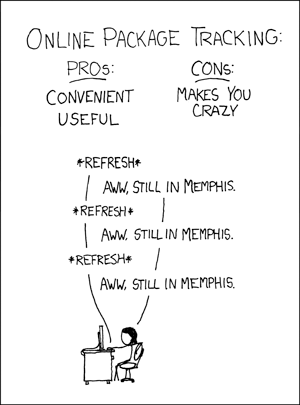Commerce
Advances in digital technologies have led to changes in many areas of commerce, with some existing kinds of business being transformed by the opportunities these developments offer. One of the most obvious changes is the emergence of retailers such as Amazon, which have an online shop but no physical one that customers can visit. Yet the internet not only benefits the largest companies but also allows even the smallest retailers to advertise their services to a global audience. Incredibly specialised companies can flourish by relying on the internet’s immense reach to deliver potential customers.
Of course, this growth has resulted in casualties in traditional (sometimes called ‘bricks and mortar’) retailing. High-street shops specialising in items such as books, DVDs, music and games have all lost business to online retailers. This has driven some shops out of business but a number of high-street stores have also opened successful online stores. Online retailers have lower costs – they don’t pay expensive high-street rents and can easily be based in countries with low tax regimes – and they can pass on these savings to customers. There are other concerns about these large online retailers, such as the employment terms and conditions of warehouse workers.
Although the low costs offered by online stores can be very attractive to customers, they might be counterbalanced to some extent by the less immediate and less tangible nature of the shopping experience. However, online retailers make up for this by providing a variety of services that reassure and inform their customers. One such service is the tracking of goods online – although this is a development that can produce its own frustrations, as illustrated in Figure 5. Interestingly, since 2015, Amazon has set up a small number of ‘till-free’ bricks-and-mortar shops in the USA, including Amazon Books and some convenience shops also, and is now considering shops in London.
Activity 4 (exploratory) The advantages and disadvantages of online shopping
Add some more entries to the following table of advantages and disadvantages of online shopping. Can you think of ways in which online retailers may try to address the disadvantages?
| Advantages | Disadvantages | |
|---|---|---|
| Buyer | ||
| Seller |
Discussion
We thought of the following but you may have come up with others.
| Advantages | Disadvantages | |
|---|---|---|
| Buyer | More choice | Can’t try goods (e.g. shoes, clothes) first |
| Can often track goods | Harder to return goods if faulty | |
| Often cheaper than a local shop | Harder to get help and advice before or after buying | |
| Some items can be downloaded immediately after buying | May be worried about online fraud | |
| Seller | No need for a physical shop | Reliant on delivery services |
| Lower running costs | Likely to get more returned goods | |
| Don’t need to keep everything in stock – can arrange delivery from suppliers | Need to respond to email or telephone queries | |
| Can supply music, books, software, etc. for download rather than having to supply a physical item | Some potential customers will be reluctant to buy online |
Online retailers may try to address the disadvantages listed above in various ways. For instance, they might provide:
- free collection of returned items
- links to online reviews of products to help advise prospective buyers
- telephone helplines
- support forums to help customers before and after buying
- advice on how to shop safely online.
As well as direct retailing, other types of businesses have also moved online – auction sites such as eBay fall into this category. Some online businesses are less conventional and, as a result, it’s often harder to see how they find the money they need to survive. For example, there are many collaborative projects that produce free products including software, online encyclopedias and educational resources. These often rely on volunteers contributing their time, with money being provided by advertising, sponsorship or donations.

